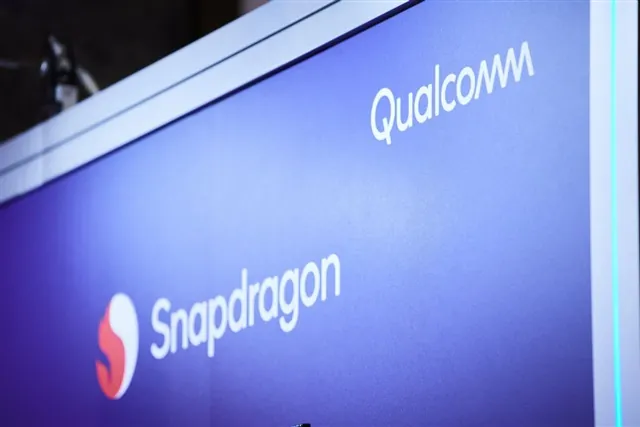
Qualcomm and AMD Gear Up to Undermine Intel's Long-Standing Dominance in AI PCs and Servers
2024-12-27
Author: Rajesh
Revolutionizing the PC Market with AI Innovations
Qualcomm is riding the wave of AI-powered PCs, positioning its Snapdragon X series processors at the forefront of the burgeoning Windows-on-Arm (WoA) ecosystem. Since the debut of its Copilot+ AI-enabled PCs in June 2024, Qualcomm has emerged not only as a contender against Intel and AMD but is also rivaling Apple’s Arm-based chips.
To enhance its market penetration, Qualcomm is sourcing top marketing and distribution talent across North America, Europe—including the UK—and Asia. By recruiting for significant roles such as "Principal Enterprise Architect," Qualcomm aims to bolster its partner ecosystem, optimizing collaboration channels crucial for its ambitious growth strategy.
During its 2024 Investor Day, Qualcomm projected a substantial increase in its QCT revenue, aiming to rise from $8.3 billion in 2024 to $22 billion by 2029, with $4 billion expected from its IoT-focused PC segment.
CEO Cristiano Amon stressed the importance of a robust global retail network, while Alex Katouzian, GM of the Mobile, Compute, and XR (MCX) Business Unit, pointed to partnerships with over 40 key channel partners. Insight Enterprises played a notable role by training 500 sales representatives to engage with a vast network of more than 2,000 corporate clients.
AMD's Aggressive Strategy in the Data Center Arena
AMD is actively working to dismantle Intel's supremacy in data centers. Dan McNamara, Senior Vice President of AMD's Server Business Unit, outlined a refined approach to penetrate enterprise, mid-market, and small-to-medium business (SMB) sectors.
With the launch of its 4th-generation Epyc processors (Genoa) in 2022, AMD’s x86 server CPU market share has surged to 24.2%, creeping closer to its record 26.2% from 2006. This is a remarkable feat, especially as AMD prepares to unveil its 5th-generation Epyc processors (Turin) in 2024, promising improved performance, energy efficiency, and total cost of ownership (TCO—especially valuable to enterprises needing vertical scalability.
The compounding influence of AI adoption has led to soaring demand for GPUs and accelerators. Qualcomm's Snapdragon X series integrates essential AI functionalities, while AMD’s Instinct product line and Epyc CPUs are tailored for high-performance computing and AI cluster support. Reports indicate that AMD's CPUs, functioning in synergy with Nvidia's GPUs, have experienced a spike in demand, further buoyed by delays in Intel's third-generation Xeon processors.
Strategic Alignments for Future Growth
Both Qualcomm and AMD are targeting high-performance vertical markets. This approach begins with high-end clients before strategically expanding into mid-tier and SMB demographics, effectively minimizing risk while capitalizing on market growth opportunities.
Through global partnerships, Qualcomm and AMD invest in market education, including rigorous sales training and proof-of-concept initiatives to illustrate their products' value, driving greater adoption in an increasingly competitive landscape.
While both companies challenge Intel, they pursue distinctive strategies: Qualcomm focuses on energy-efficient Arm-based PCs, whereas AMD hones in on server efficiency and enterprise applications. This dynamic positions them not only as rivals but also as potential collaborators in the arena of HPC and AI solutions.
Future Prospects and Strategic Initiatives
With ambitious goals laid out, Qualcomm aims to transition a staggering 30-50% of the notebook market to non-x86 platforms within five years. Insights from industry analyses reveal that Qualcomm's collaborations are just the beginning, with plans for deeper engagement in mid-tier and SMB sectors.
Meanwhile, AMD remains committed to expanding its server market share, leveraging advanced AI technologies to fortify its competitive stance. As the tech landscape evolves, the strategic maneuvers of Qualcomm and AMD are poised to challenge Intel’s legacy, heralding an era of innovation and fierce competition across the PC and server markets.
What's Next?
Keep an eye on this high-stakes showdown, as Qualcomm and AMD's strategic exploits might just flip the script on the tech industry!



 Brasil (PT)
Brasil (PT)
 Canada (EN)
Canada (EN)
 Chile (ES)
Chile (ES)
 Česko (CS)
Česko (CS)
 대한민국 (KO)
대한민국 (KO)
 España (ES)
España (ES)
 France (FR)
France (FR)
 Hong Kong (EN)
Hong Kong (EN)
 Italia (IT)
Italia (IT)
 日本 (JA)
日本 (JA)
 Magyarország (HU)
Magyarország (HU)
 Norge (NO)
Norge (NO)
 Polska (PL)
Polska (PL)
 Schweiz (DE)
Schweiz (DE)
 Singapore (EN)
Singapore (EN)
 Sverige (SV)
Sverige (SV)
 Suomi (FI)
Suomi (FI)
 Türkiye (TR)
Türkiye (TR)